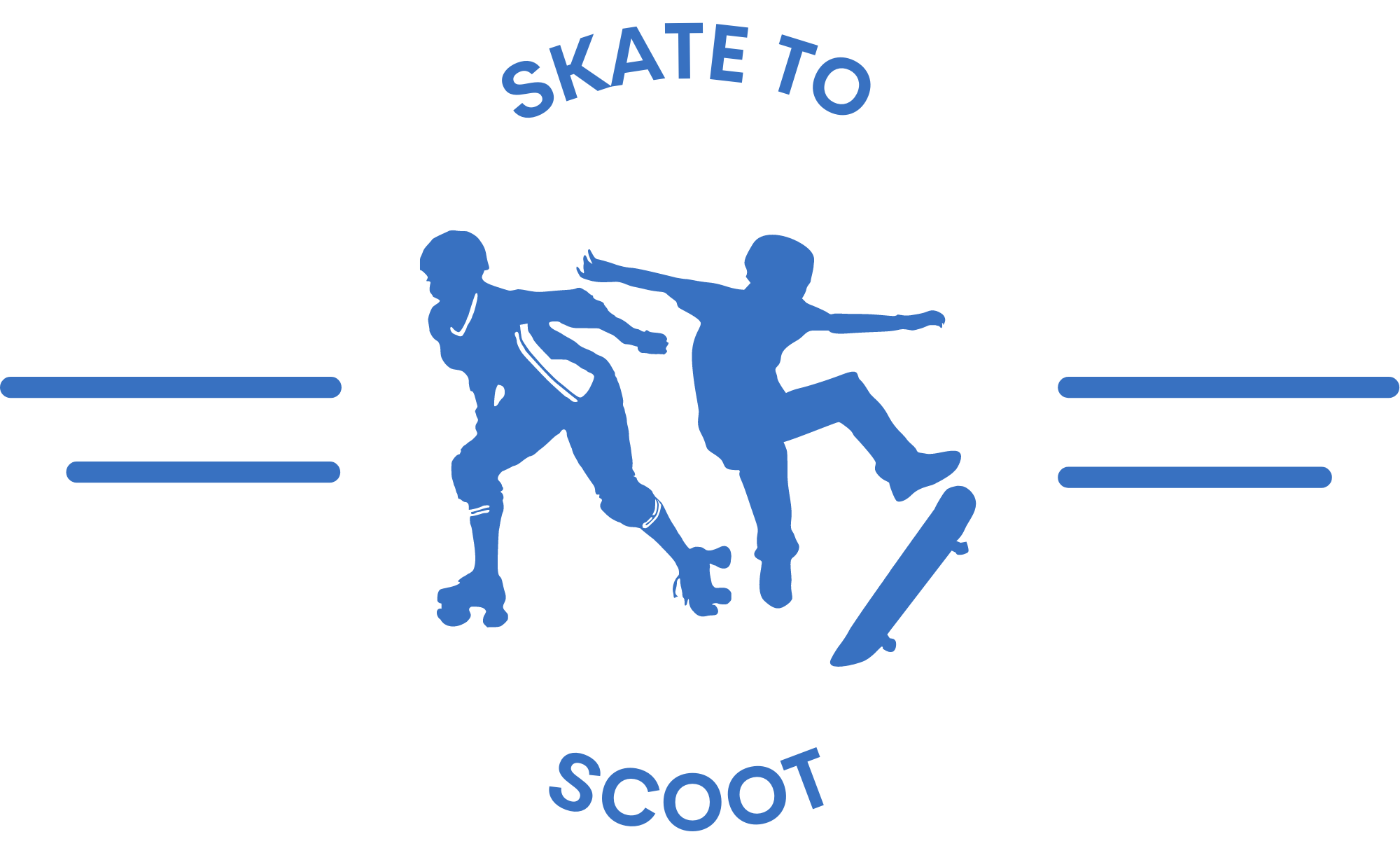As an Amazon Associate we earn from qualifying purchases.
A longboard is a type of skateboard that is longer and wider than a traditional skateboard. It is designed for cruising and transportation, as well as for downhill racing and freestyle tricks. Longboards typically have larger wheels and softer bushings, which make them more stable and easier to ride over longer distances.
They are popular among commuters, as well as riders who enjoy carving, sliding, and freeriding. Longboards come in various shapes and sizes, offering different riding experiences based on the rider’s preferences and intended use.

History of the Longboard
The longboard has a rich history that dates back to the late 1940s and early 1950s. Preston Nichols was one of the pioneers of the longboard, creating custom-built wooden planks with metal wheels to entertain and keep surfers fit while waiting for ideal ocean swells. This practice soon became known as “sidewalk surfing.”
Tom Sim, often regarded as the “father of the longboard,” further developed the sport in the 1970s. Inspired by water skis, Sim began building large boards and experimented with different wood laminates. He was known for his fluid style and started producing commercial longboards in various lengths.
Other pioneers of the 1970s, such as Ed Economy and Brad Stradlund, also played a significant role in shaping the longboarding scene. Influenced by renowned surfers like Gerry Lopez and Larry Bertlemann, these innovators embraced a fast and carving riding style, emulating the feeling of surfing on the pavement.
Different Types of Longboards
Longboards come in a wide variety of shapes, sizes, and materials, catering to different riding styles and preferences. Compared to traditional skateboards, longboards are longer and wider, offering a more stable and comfortable ride.
One type of longboard is the drop-through deck. These longboards have cutouts on both sides of the board where the trucks are mounted, lowering the deck closer to the ground. This design reduces the center of gravity, providing better stability and making it easier to push and slide.
Pintail longboards have a narrow and pointed shape resembling a surfboard, ideal for cruising and carving. This shape allows for smoother transitions between turns and more control at higher speeds.
Top-mount longboards have trucks mounted directly beneath the deck, providing more responsiveness and maneuverability. These longboards are popular for technical tricks and freestyle longboarding.
Another popular style is the drop deck, which has a lowered platform between the trucks. This design enhances stability and makes it easier to push for long distances.
Longboard decks can be made from various materials such as bamboo, fiberglass, carbon fiber, maple, cork, and composites. Each material offers different characteristics in terms of flex, durability, and weight.
Soft Wheels vs. Hard Wheels: Exploring the Differences
When it comes to longboarding, choosing the right wheels can significantly impact your overall riding experience. Two common options you’ll come across are soft wheels and hard wheels. Understanding their differences and how they can affect your ride is essential.
Soft wheels, as the name suggests, are made of softer durometer materials. These wheels typically measure between 78A and 87A on the durometer scale, which indicates their hardness. Soft wheels excel at shock absorption and provide excellent grip, making them a popular choice for longboard riders on varied terrains. Whether you’re cruising on rough asphalt or navigating through street cracks, soft wheels offer stability and a smooth ride.
On the other hand, hard wheels are best suited for skateboarding tricks and smooth surfaces. Measuring between 90A and 101A on the durometer scale, these wheels are less forgiving on rough terrains but excel at sliding and accelerating quickly. Their harder nature allows for controlled slides, making them ideal for technical tricks where precision is required.
Both soft and hard wheels have their advantages and disadvantages. Soft wheels provide better shock absorption and grip, ensuring a comfortable ride, especially on uneven surfaces. They also excel in carving and provide stability during downhill rides. However, they may pose challenges like wheel bite, where the wheel touches the deck, limiting maneuverability.
Deck Shape & Size
Longboard decks come in a variety of shapes and sizes, each catering to different riding styles and preferences. Two common deck shapes are directional and twin/symmetrical.
Directional decks have a front and back end that are different in shape. The front end is often pointed or slightly wider, while the back end is narrower and may have a gentle kicktail. This shape allows for better control during carving and stability at high speeds, making them ideal for downhill racing.
Twin/symmetrical decks have the same shape at both ends, making them symmetrical in design. These decks are often preferred by riders who enjoy freestyle longboarding or dancing. The symmetrical shape allows for easy switch riding, as both ends provide the same control and feel.
The deck shape also influences stability, foot-braking, and carving ability. Directional decks offer better stability due to their front-end design, making them easier to control while foot-braking or carving. Twin/symmetrical decks provide a more balanced feel, allowing for smooth transitions and quick directional changes during carving.
Shape and Design
Longboard skateboards come in a variety of shapes and designs to suit different riding styles and preferences. The most common shape is the pintail, which resembles a surfboard. It has a soft round nose, widens towards the center, and tapers into a tail. This shape provides stability and allows for smooth carving and cruising.
Many longboard decks have a concave curve across the width, which enhances foot grip and control. Some decks also have a slight upward curve from nose to tail, known as camber. This can add flexibility and responsiveness to the board.
Kicktails, which are raised sections at the ends of the deck, are optional on longboards and are more commonly found on regular skateboards.
Longboard decks often have fenders to prevent the wheels from making contact with the deck when leaning into turns. This is important because longboard trucks and wheels are bigger and taller than those on regular skateboards.
Downhill longboards have a slightly different design to optimize stability, speed, and control. They usually have cutaway fenders to provide clearance for sharp turns. The contour of their decks ranges from nearly flat to slightly concave, with some featuring a drop-through style for added flexibility and special truck mounts.
Deck, Wheels, and Trucks Dimensions
A longboard’s deck, wheels, and truck dimensions play a crucial role in determining its performance and riding experience. The deck of a longboard is typically made of multiple layers of hard maple veneer, solid wood, bamboo, fiberglass, or synthetic materials. It can range from 8 1/4 inches to 10 inches wide and from 36 inches to as much as 50 inches long.
The wheels of a longboard are available in different sizes and hardness levels, typically ranging from 60 mm to 100 mm in diameter. A smaller wheel size provides quicker acceleration, while a larger wheel size offers higher top speed. The hardness of the wheels, measured on the durometer scale, typically ranges from 78a to 90a. Softer wheels provide a smoother and softer ride, especially when rolling over rough surfaces.
The trucks of a longboard are responsible for turning and stability. Most longboards feature reverse kingpin trucks, which are typically around 8 1/2 inches wide and can go up to 10 inches wide. Reverse kingpin trucks offer enhanced maneuverability and stability, making them ideal for cruising and carving.
For downhill longboards, the dimensions may differ slightly. The decks are often made from fiberglass, epoxy, and Kevlar, with dimensions ranging from 8 1/4 inches to 10 inches wide and 36 inches to 44 inches long. The wheels are generally smaller, ranging from 60 mm to 75 mm in diameter, with a hardness of about 78a to 88a. The reverse kingpin trucks used for downhill longboarding typically range from 180 mm to 210 mm in width.
How, When, and Where to Ride a Longboard
A longboard skateboard is an ideal choice for riders of all skill levels and ages. These long planks of wood offer a smooth and comfortable ride on various surfaces, such as concrete and tarmac.
With their soft and cushioned wheels, they are forgiving and can handle rough terrains, easily rolling over rocks and twigs without causing the rider to lose balance. Riding a longboard is best enjoyed on long, winding paths or open roads with minimal car traffic, such as bike paths, beachfront boardwalks, and low-traffic roads.
Longboards are not designed for areas with obstacles like curbs, vert ramps, and stairs. However, they are suitable for commuting and cruising around, providing a fun and eco-friendly means of transportation. Many technical skaters incorporate longboards into their equipment to diversify their skating style. Longboarding also serves as excellent cross-training for surfers and snowboarders.
FAQs
Longboards differ from skateboards primarily in size, shape, and purpose. Longboards have a longer deck, larger wheels, and are designed for smoother rides and greater stability, making them ideal for cruising and transportation over longer distances.
There are various types of longboards tailored for specific styles and purposes, including cruising, downhill, freestyle, freeride, and carving. Each type has unique features, shapes, and designs optimized for the intended riding style.
Yes, longboards can be great for beginners due to their stability and ease of learning. Their larger size and softer wheels provide a more balanced and forgiving experience compared to traditional skateboards, making them ideal for those new to riding.
To choose the right longboard, consider your riding style, experience level, and intended use. Factors such as deck size, shape, wheel size, and flexibility play a role. Consulting with experts or trying different types of longboards can help you find the one that suits you best.
While longboards are primarily designed for cruising and transportation, some riders can perform tricks like slides, pivots, and dancing on certain longboard styles. However, traditional skateboard tricks requiring flips and aerial maneuvers are more commonly associated with standard skateboards due to their smaller size and maneuverability.
Conclusion
A longboard is not just a piece of wood with wheels. It’s a gateway to freedom, adventure, and a whole new way of experiencing the world around you. Whether you’re a beginner or an experienced rider, a longboard can bring joy, excitement, and a sense of exhilaration to your life.
So grab a board, hit the pavement, and let the ride take you to places you’ve never been before!
Amazon and the Amazon logo are trademarks of Amazon.com, Inc, or its affiliates.



